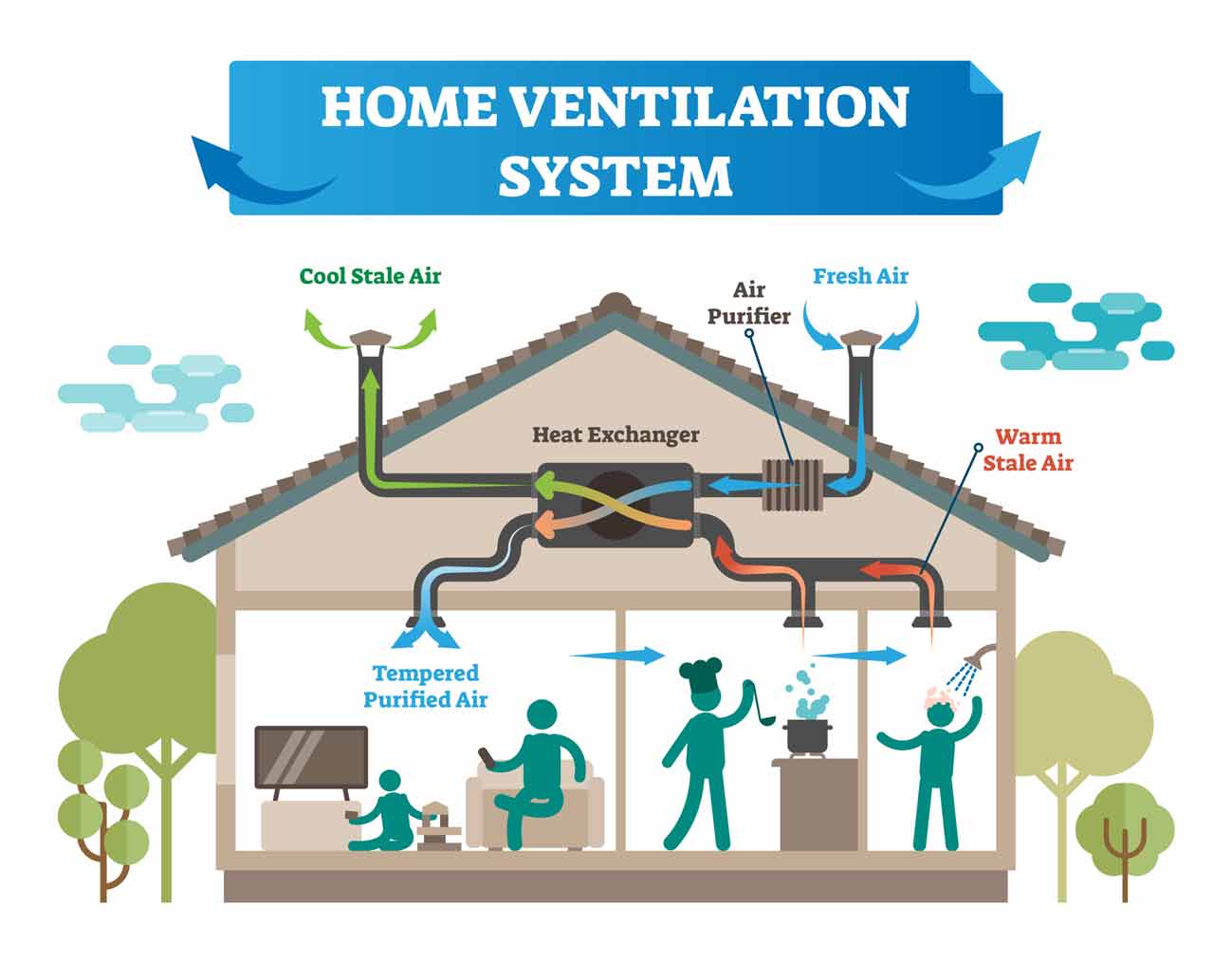HRV Shopping Tips: What Features to Consider
Wiki Article
The All-Inclusive Overview to the Uses of Heat Recovery Ventilation in Modern Structures
Heat Recovery Ventilation (HRV) systems represent a considerable development in building innovation (HRV Heat Recovery Ventilation). They provide a method for trading stale indoor air with fresh outdoor air while decreasing power loss. This technique not just improves indoor air quality but also adds to power effectiveness in both household and business buildings. Comprehending the numerous applications and benefits of HRV can disclose its critical duty in contemporary layout and sustainability initiatives. The effects of this innovation deserve discovering betterComprehending Heat Recovery Ventilation Systems

Numerous contemporary buildings focus on power performance, understanding heat recuperation ventilation (HRV) systems is important for maximizing interior air top quality and reducing energy consumption. HRV systems work by transferring heat from stale interior air to incoming fresh air, efficiently keeping comfortable indoor temperature levels while minimizing energy loss. These systems contain a heat exchanger, fans, and ductwork that facilitate the blood circulation of air. During winter months, HRV devices catch and reuse warmth from the outbound air, while in summertime, they can assist cool down incoming air. By continuously exchanging air, HRV systems also decrease humidity and the focus of indoor pollutants. Proper installment and maintenance of HRV systems are crucial for their efficiency and effectiveness in enhancing overall structure efficiency and comfort.
Benefits of Heat Recovery Ventilation
Heat recovery ventilation systems provide many benefits that improve both energy effectiveness and interior air quality in modern-day buildings. By catching and reusing energy from exhaust air, these systems greatly decrease home heating and cooling expenses, leading to reduced energy consumption. Furthermore, they maintain a stable flow of fresh exterior air, lessening the danger of indoor air contaminants and irritants. This constant exchange helps control humidity levels, preventing mold growth and making sure a healthier living atmosphere. Additionally, HRV systems add to sustainability goals by decreasing general carbon footprints. Their ability to enhance air flow without compromising thermal comfort makes them a beneficial addition to modern structure style, advertising both financial and ecological benefits.Applications of HRV in Residential Structures
As home owners increasingly prioritize energy efficiency and interior air top quality, the applications of warmth recuperation air flow (HRV) systems in household buildings have actually come to be extra common. HRV systems are especially advantageous in tightly sealed homes, where preserving fresh air circulation is vital for avoiding dampness accumulation and interior pollutants. They successfully transfer heat from outbound stagnant air to incoming fresh air, minimizing energy prices connected with heating & cooling. In addition, HRVs can boost convenience degrees by managing humidity and temperature level. They are also adaptable for different residential styles, including single-family homes and multi-unit buildings. Generally, incorporating HRV systems supports lasting living techniques while making certain a healthier indoor environment for occupants.HRV in Industrial and Commercial Settings
In commercial and industrial settings, the application of warmth recovery ventilation (HRV) systems has ended up being significantly critical for enhancing energy efficiency and preserving air quality. These systems successfully transfer warm from exhaust air to incoming fresh air, decreasing the requirement for extra home heating or cooling. This not only reduces energy prices however additionally adds to sustainability efforts. Industries such as production, warehousing, and office complex profit significantly from HRV systems, as they aid control temperature and humidity degrees, ensuring a comfortable and effective atmosphere. Additionally, HRV systems help in removing pollutants and excess wetness, improving interior air quality. As guidelines around air quality come to be more stringent, the fostering of HRV innovation is most likely to grow, HRV Heat Recovery Ventilation making it an important component of modern-day business and commercial facilities.Future Trends in Heat Recovery Ventilation Technology

Regularly Asked Concerns
Exactly How Does Heat Recovery Ventilation Influence Indoor Air High Quality?
Heat recovery ventilation considerably enhances interior air top quality by continually exchanging stale indoor air with fresh exterior air while recovering power. This process decreases contaminants, keeps perfect humidity degrees, and guarantees a healthier setting for occupants.Can HRV Equipments Be Set Up in Existing Buildings?
HRV systems can undoubtedly be installed in existing structures. Retrofitting may need alterations to ductwork and ventilation designs, yet it significantly boosts energy performance and indoor air quality, making it a viable option for older frameworks.What Maintenance Is Required for HRV Solutions?

Are There Particular Climates Where HRV Is Much More Effective?
Heat recovery ventilation systems are particularly efficient in environments with significant temperature distinctions in between seasons. These systems enhance energy performance by recuperating heat from exhaust air, making them ideal for both cool and reasonably cozy atmospheres.How Do HRV Equipments Affect Energy Expenses?

Report this wiki page